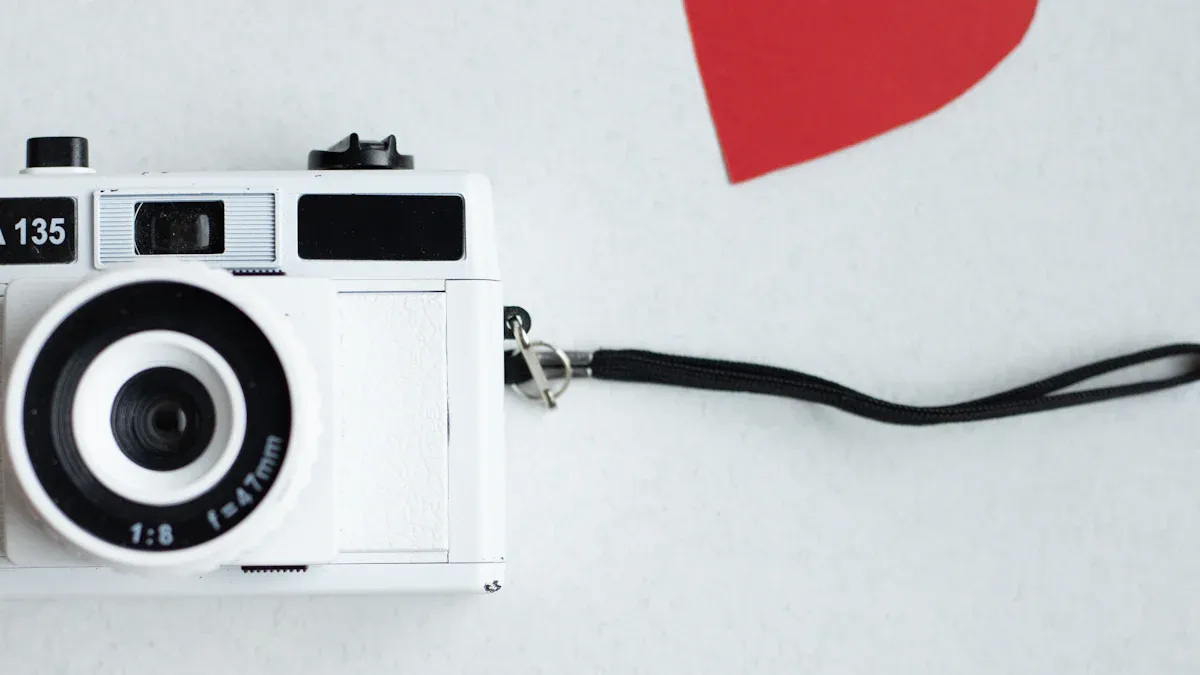How to Clean Your Helius Flashlight for Optimal Performance

Keeping your Helius flashlight clean is crucial for maintaining its peak performance. Dirt and grime can reduce the brightness of your insanely bright LED flashlight, making it less effective. Regular cleaning ensures your handheld LED flashlight stays reliable and ready for use. A well-maintained flashlight delivers consistent beam clarity and extends its lifespan.
Key Takeaways
Clean your Helius flashlight often to keep it bright. This also helps it last longer. Clean it every month or after heavy use.
Use safe tools like soft cloths and brushes to clean. Do not use strong chemicals that might harm the flashlight.
Apply lubricant to O-rings and threads with proper products. Use items like Krytox or Super Lube for waterproofing and smooth use.
Tools and Materials Needed

To clean your Helius flashlight effectively, you’ll need a few essential tools and materials. These items ensure a thorough cleaning process while protecting your flashlight from damage.
Microfiber Cloths and Soft Brushes
Use a microfiber cloth to wipe down the flashlight’s exterior. It removes dirt and smudges without scratching the surface. For hard-to-reach areas, a soft brush works best. Brushes with fine bristles can clean grooves and textured surfaces without causing damage.
Mild Detergent or Isopropyl Alcohol
A mild detergent mixed with water is ideal for cleaning the flashlight’s body. It’s gentle yet effective at removing grime. For tougher stains or sticky residue, isopropyl alcohol is a great alternative. Apply it sparingly to avoid damaging sensitive components.
Cotton Swabs and Toothpicks
Cotton swabs help clean small crevices, such as around buttons or seams. Toothpicks are useful for dislodging dirt from tight spaces. Be gentle to avoid scratching or damaging the flashlight’s finish.
Lubricant for O-Rings and Threads
Lubricating the O-rings and threads keeps your flashlight watertight and ensures smooth operation. Here’s a quick guide to some effective lubricants:
Lubricant | Description | Usage Notes |
|---|---|---|
Vaseline | Safe on everything, including skin and O-rings. Mineral oil based. | Avoid on rubber O-rings. |
No-Ox-Id | Safe for various applications, including battery terminals. | Good for long-term use. |
Nyogel | Used by Surefire, effective for O-rings. | Recommended for flashlight maintenance. |
Super Lube | Synthetic, inert, and dielectric. | Cost-effective and safe for O-rings. |
For the best results, consider using Krytox or Super Lube. These lubricants are non-reactive and provide smooth action, making them ideal for maintaining your insanely bright LED flashlight.
Protective Gloves (Optional)
Wearing gloves can protect your hands from cleaning agents and dirt. They also prevent oils from your skin from transferring to the flashlight, keeping it clean for longer.
Tip: Always use tools and materials that are safe for your flashlight’s specific materials. Avoid abrasive items that could scratch or damage the surface.
Step-by-Step Cleaning Process

Cleaning the Exterior of the Flashlight
Follow these steps to clean the exterior of your flashlight effectively:
Remove the Batteries: Turn off the flashlight and unscrew the battery compartment cap. Take out the batteries to prevent accidental activation during cleaning.
Clean the Surface: Use a soft microfiber cloth or brush to wipe the flashlight’s body. Pay close attention to grooves and textured areas where dirt tends to accumulate.
Wipe the Lens: Gently clean the lens with a microfiber cloth. For stubborn stains, apply a small amount of lens cleaning solution to the cloth and wipe carefully.
Inspect the Battery Compartment: Check for any debris or corrosion inside the compartment. If needed, clean it with a cotton swab or soft brush.
Air Dry the Parts: Place all components in a well-ventilated area to dry completely.
Reassemble and Test: Once dry, reinsert the batteries correctly and screw the cap back on. Turn on the flashlight to ensure it works properly.
Tip: Avoid using excessive liquid on the lens or body to prevent moisture from seeping into the flashlight.
Cleaning the Interior Components
To clean the interior components without causing damage:
Refer to the manufacturer’s instructions for approved cleaning solutions.
Use a soft brush or cotton swab to remove dirt from internal parts.
Avoid spraying liquid directly onto the lens or interior to prevent seepage.
Handle the lens and other delicate parts with care. Abrasive materials can scratch or damage them.
Allow all parts to air dry completely before reassembling.
Note: Proper drying prevents moisture buildup, which can harm the flashlight’s performance.
Cleaning and Inspecting Battery Contacts
Battery contacts play a crucial role in your flashlight’s functionality. Dirty or corroded contacts can disrupt power flow. Here’s how to clean them:
Inspect the contacts for signs of corrosion or debris.
If corrosion is present, use a mixture of vinegar and water or lemon juice to clean the affected areas. Apply the solution with a cotton swab and gently scrub the contacts.
Wipe the contacts with a dry cloth to remove any residue.
Ensure the contacts are completely dry before reinserting the batteries.
Reminder: Regularly cleaning battery contacts ensures consistent power delivery and prevents performance issues.
Maintenance Tips for Your Helius Flashlight
Lubricating O-rings and Threads
O-rings and threads are vital for keeping your Helius flashlight watertight and dust-resistant. Regular lubrication ensures these components function smoothly and maintain their protective seal. Use a high-quality lubricant like Krytox or Super Lube. Apply a small amount to the O-rings and threads using a cotton swab or your fingertip. Spread it evenly to avoid over-lubrication, which can attract dirt. Inspect the O-rings for cracks or wear before applying lubricant. Replace damaged O-rings immediately to maintain the flashlight’s waterproofing.
Tip: Avoid petroleum-based lubricants on rubber O-rings, as they can cause deterioration over time.
Inspecting and Replacing Worn or Damaged Parts
Routine inspections help you identify parts that need replacement. Focus on these common areas:
O-Rings: Check for cracks or brittleness.
Battery Contacts: Look for corrosion or dirt buildup.
Seals: Inspect for tears or wear that could compromise water resistance.
Lens and Reflector: Ensure they are clean and free of scratches or damage.
Replace any worn or damaged parts promptly to keep your flashlight in top condition. Regular inspections are a key part of flashlight maintenance and help extend its lifespan.
Proper Storage to Prevent Damage
Storing your flashlight correctly prevents unnecessary wear and tear. Follow these tips to take care of your flashlight:
Store it in a cool, dry place to avoid moisture damage.
Keep it away from direct sunlight, which can degrade materials and batteries.
Remove the batteries if you won’t use the flashlight for an extended period. This prevents leakage and corrosion in the battery compartment.
Proper storage ensures your flashlight remains ready for use whenever you need it.
Reminder: Moisture and extreme temperatures can harm your flashlight’s internal components, so always store it in a controlled environment.
Common Mistakes to Avoid
Using harsh or abrasive cleaning agents
Avoid using harsh chemicals or abrasive materials when cleaning your flashlight. These substances can damage the surface, scratch the lens, or degrade the protective coatings. Stick to mild detergents or isopropyl alcohol for safe and effective cleaning. Always test any cleaning solution on a small, inconspicuous area before applying it to the entire flashlight. This precaution ensures the material remains unharmed.
Tip: Never use steel wool, scouring pads, or strong solvents like acetone. These can cause irreversible damage to your flashlight.
Over-lubricating the flashlight components
Applying too much lubricant to the O-rings and threads can attract dirt and debris. This buildup can compromise the flashlight’s waterproofing and smooth operation. Use only a small amount of lubricant and spread it evenly. Excess lubricant should be wiped away with a clean cloth. Regularly inspect the flashlight to ensure the lubricant hasn’t accumulated in unwanted areas.
Reminder: Over-lubrication can do more harm than good. A light application is all you need to maintain optimal performance.
Neglecting to dry components thoroughly after cleaning
Failing to dry your flashlight completely after cleaning can lead to moisture buildup. This moisture can cause internal damage, corrosion, or even electrical issues. After cleaning, place all parts in a well-ventilated area to air dry. Use a soft cloth to remove any remaining water droplets. Before reassembling, double-check that every component is completely dry.
Note: Moisture is one of the biggest threats to your flashlight’s longevity. Take the time to dry it properly to avoid unnecessary damage.
Regular cleaning and maintenance of your Helius flashlight keep it performing at its best. A well-maintained flashlight ensures reliable illumination and extends its lifespan. To take care of your flashlight, establish a routine cleaning practice. Remove the batteries, clean the exterior and lens, and inspect the battery compartment monthly. These steps prevent debris buildup, identify issues early, and protect your flashlight from damage.
Tip: Regular maintenance ensures your flashlight is always ready when you need it most.
FAQ
How often should you clean your Helius flashlight?
Clean your Helius flashlight monthly or after heavy use. Regular cleaning prevents dirt buildup, ensures brightness, and extends its lifespan.
Can you use any lubricant for the O-rings?
No, only use lubricants safe for O-rings, like Krytox or Super Lube. Avoid petroleum-based products, which can damage rubber components.
What should you do if water enters your flashlight?
Remove the batteries immediately. Dry all parts thoroughly. Inspect for damage before reassembling. If issues persist, contact the manufacturer for assistance.
See Also
A Comprehensive Guide to Flashlight Cleaning Techniques
Key Advice for Keeping Your Flashlight in Top Shape
Complete Manual for Maintaining and Cleaning Your Flashlight
In-Depth Review of the Heliusworld Flashlight Model
Helius Tactical Flashlight: Brightening Your Outdoor Experiences
